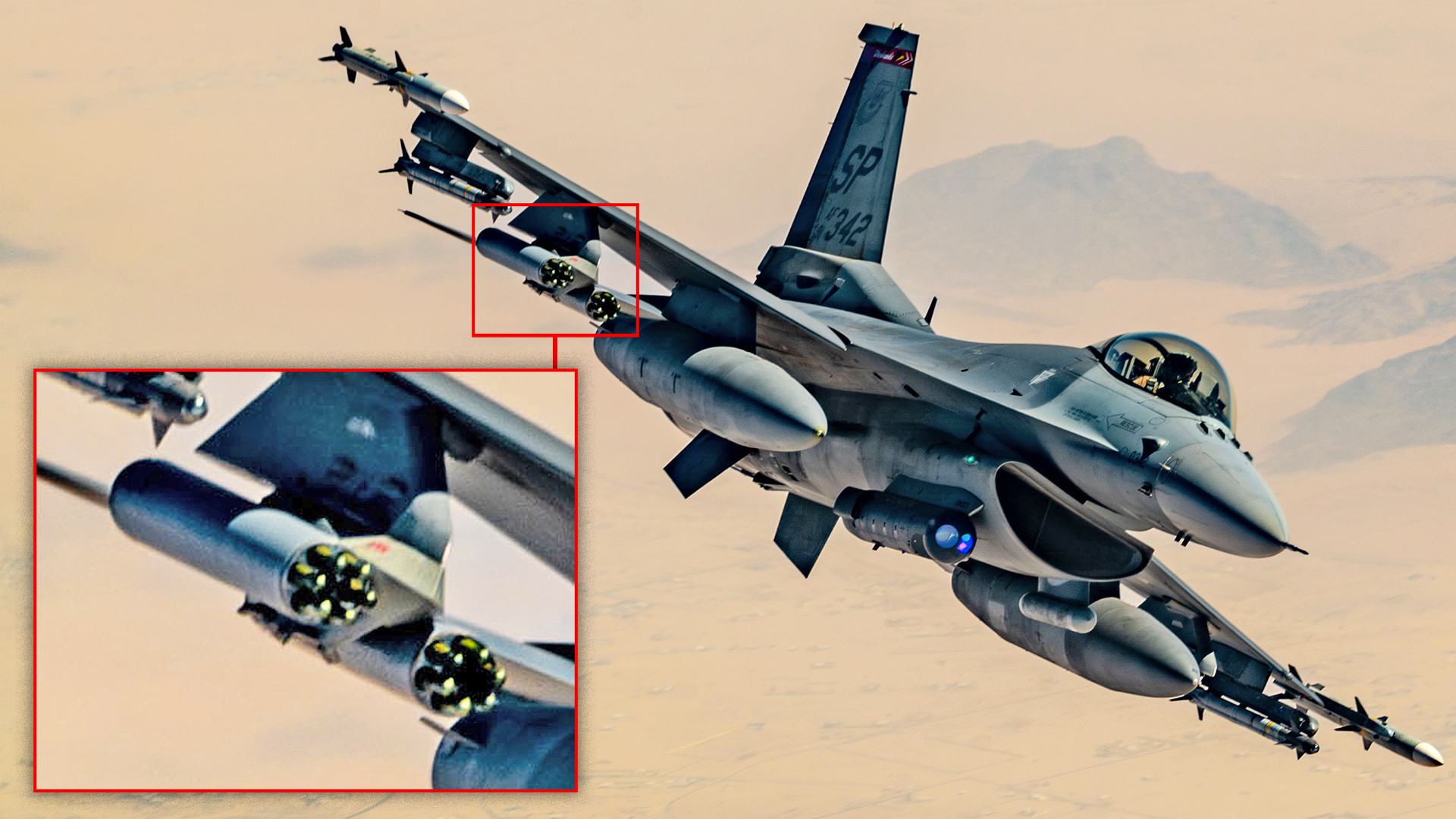New pictures show U.S. Air Force F-16C Viper fighters on patrol in and around the Middle East with loadouts that include two seven-shot 70mm rocket pods, and both on the same pylon, rather than just one as has been seen previously. The same images also show an F-16C armed with a mix of AIM-120 AMRAAM and AIM-9 Sidewinder air-to-air missiles and sporting a drone kill marking. TWZ first reported last month that Air Force Vipers have been using laser-guided 70mm Advanced Precision Kill Weapon System II (APKWS II) rockets, originally designed as air-to-ground munitions, as a lower-cost way to down Houthi drones.
The U.S. Air Forces Central (AFCENT), the service’s top command for operations in the Middle East, released two sets of pictures of F-16s flying in the region earlier today. The photographs were all taken earlier this month.
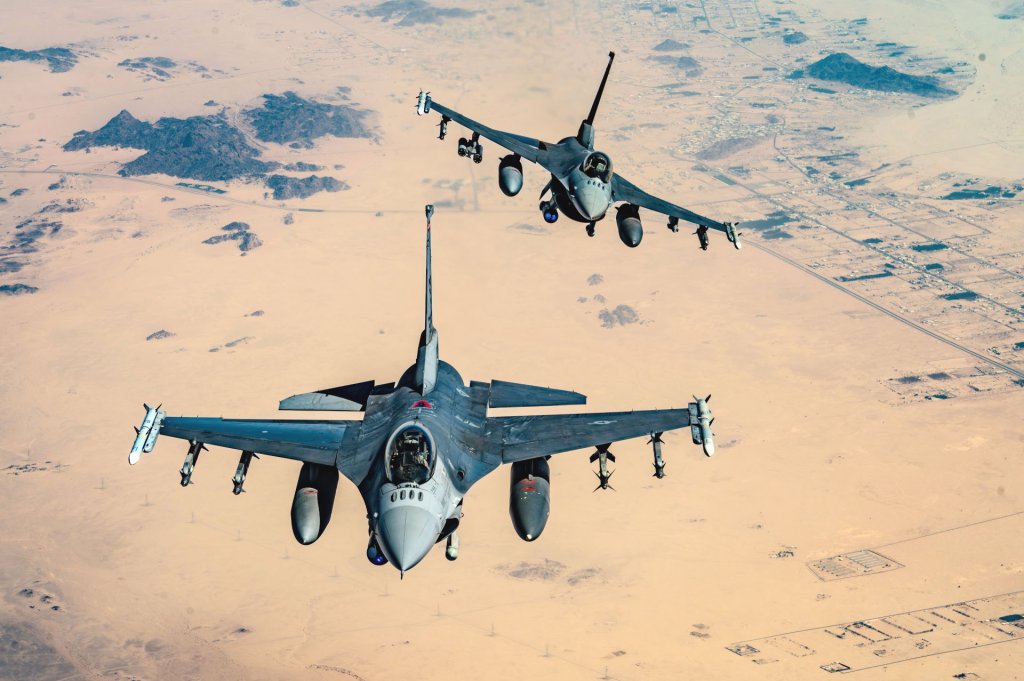
The image sets show pairs of F-16Cs flying together and, in both cases, one of the Vipers has a pair of seven-round 70mm rocket pods on a single pylon under its right wing with the help of a triple ejector rack (TER), as seen below. Each of the rocket-armed jets also are seen carrying two AIM-9X Sidewinders, two AIM-120s, a LITENING targeting pod, a HARM Targeting System (HTS) pod, and two drop tanks. As noted, pictures AFCENT has previously released have shown F-16s with one rocket pod instead of two, but otherwise similar load-outs. A version of the single rocket pod loadout has also been observed on Vipers forward-deployed in Japan.
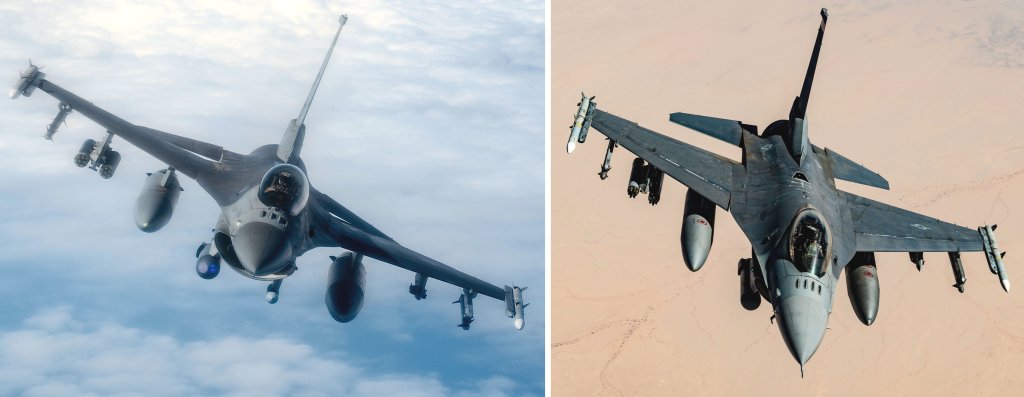
The other Vipers seen in the new pictures are armed with four Sidewinders each – a mixture of AIM-9M and AIM-9X variants – and two AIM-120s, as well as the same array of pods and drop tanks. One of these jets also has a drone kill marking, as well as six others that are silhouettes of a revolver, on the left side of the fuselage right under the forward end of the cockpit canopy. What the revolvers signify is unknown, but they might reflect the destruction of targets with the jet’s 20mm M61 Vulcan cannon, a six-barrel Gatling-type design. This particular aircraft also has three large rows of badly worn air-to-ground mission marks.
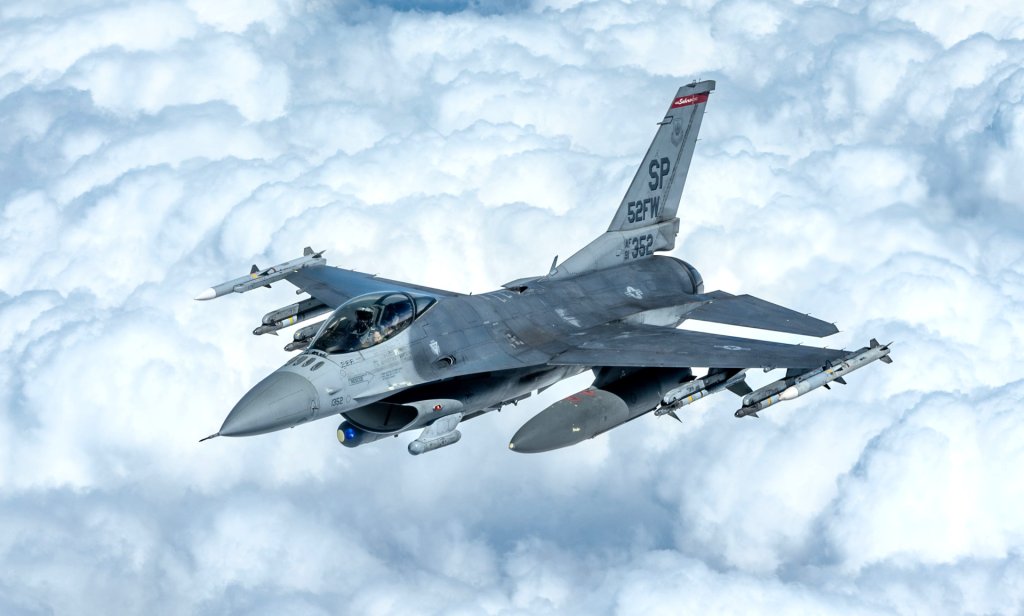
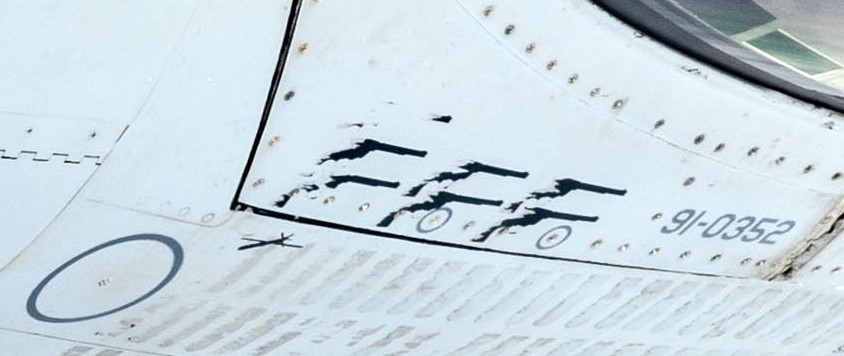
Other U.S. military combat jets, as well as American and other foreign warships, have previously emerged with drone and missile kill markings in relation to operations against the Houthis in and around the Red Sea. A Navy EA-18G Growler electronic warfare jet also now has a silhouette of a Hind attack helicopter painted on its fuselage after blowing one up on the ground in Yemen with an AGM-88E Advanced Anti-Radiation Guided Missile (AARGM), which TWZ was first to confirm.
The appearance of F-16s in the Middle East with larger rocket loads is not surprising. As TWZ highlighted in January in our first report on the use of APKWS II in the air-to-air role, even a single seven-shot pod of the laser-guided rockets dramatically increases the Viper’s total magazine depth. As seen again in the newly released pictures, an F-16 with a more typical air-to-air loadout carries just six missiles.
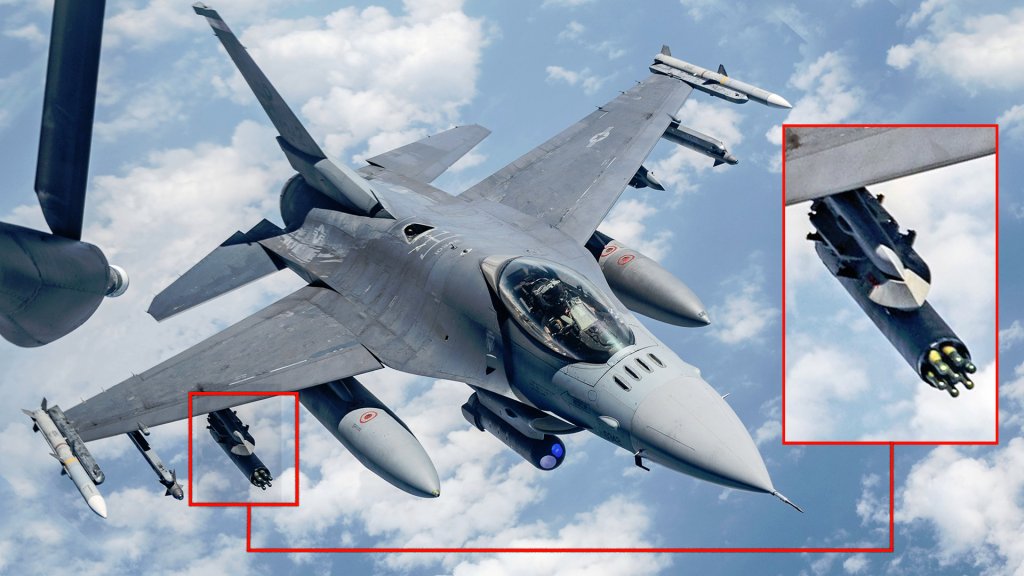
Underscoring the importance of magazine depth, during the separate U.S. operations in the defense of Israel against incoming waves of Iranian drones and missiles, F-15E Strike Eagles had to land and rearm while threats were still passing overhead. At least one Strike Eagle crew switched to the jet’s Vulcan cannon after running out of missiles, but was unable to down any targets with the gun. The F-15E has far more payload capacity than the F-16C to begin with, though the Strike Eagle is not currently cleared to carry APKWS IIs.
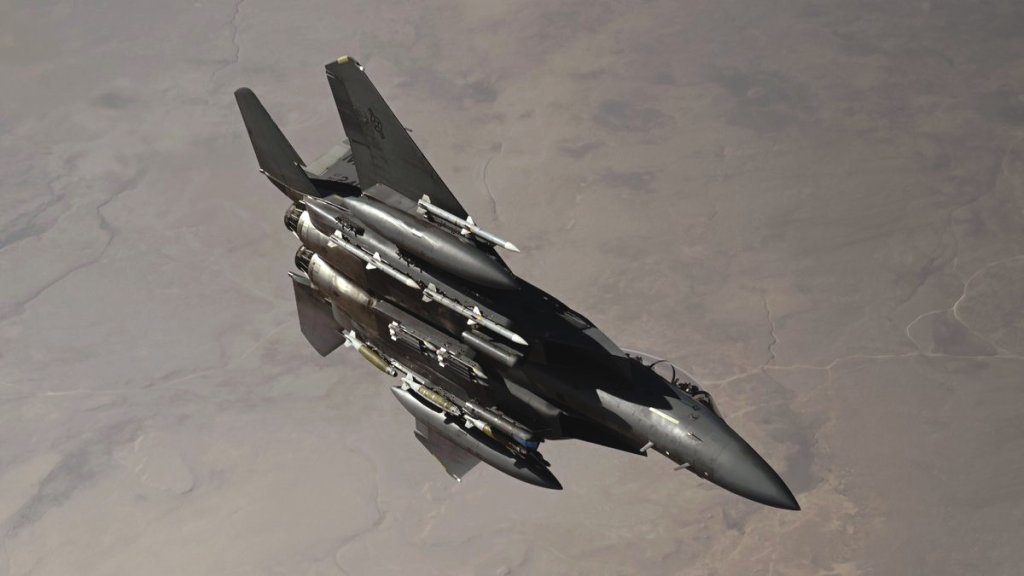
There’s also the associated cost benefit. An APKWS II rocket consists of a laser guidance kit slotted in between one of a variety of warheads and a standard 70mm rocket motor. A single guidance unit costs between around $15,000 to $20,000. Warheads and motors add a few thousand dollars more to the price tag of each complete rocket. By comparison, traditional air-to-air missiles are hundreds of thousands of dollars or more apiece.

APKWS II does have limitations in the air-to-air role. As TWZ has previously explained:
“In an air-to-air engagement, the laser designator in the LITENING pod could be used to ‘laze’ or designate the target. LITENING’s sensor turret can be slaved to the radar on the aircraft carrying it, or vice versa. So-called buddy lasing, where one aircraft designates the target for another, could also be useful in this case, especially given the speed differential between typical Houthi drones and F-16s. One jet could keep the target steadily lazed while the other makes its attack run.”
“APKWS IIs are usable against drones, as well as subsonic cruise missiles, in the first place because those are relatively steady, non-reactionary, low-performance targets. The rockets are not dogfighting weapons.”
After first being demonstrated as an air-to-air weapon, at least publicly, in 2019, APKWS II has clearly become a valuable addition to the U.S. military’s aerial arsenal in this role. Further expanded loadouts could now begin to emerge. Asymmetrical load of two seven-shot pods under each wing would give an F-16 28 total engagement opportunities just with laser-guided rockets. Similar loadouts could be a boon for other aircraft, especially when facing down large drone and missile attacks. In addition to the Viper, the AV-8B Harrier, A-10 Warthog, and F/A-18 Hornet fixed-wing aircraft, as well as AH-1Z, UH-1Y, and MH-60R/S helicopters, are currently cleared to employ APKWS II.
APKWS II is also combat-proven in the surface-to-air role against drones and as a surface-to-surface weapon, as well as an air-to-ground munition. There is work now to at least test a passive infrared seeker for the rockets, which would further expand their capabilities, as you can read more about here.

The use of the 70mm laser-guided rockets in the air-to-air role, at least in the Middle East, already looks to be expanding.
Contact the author: joe@twz.com
